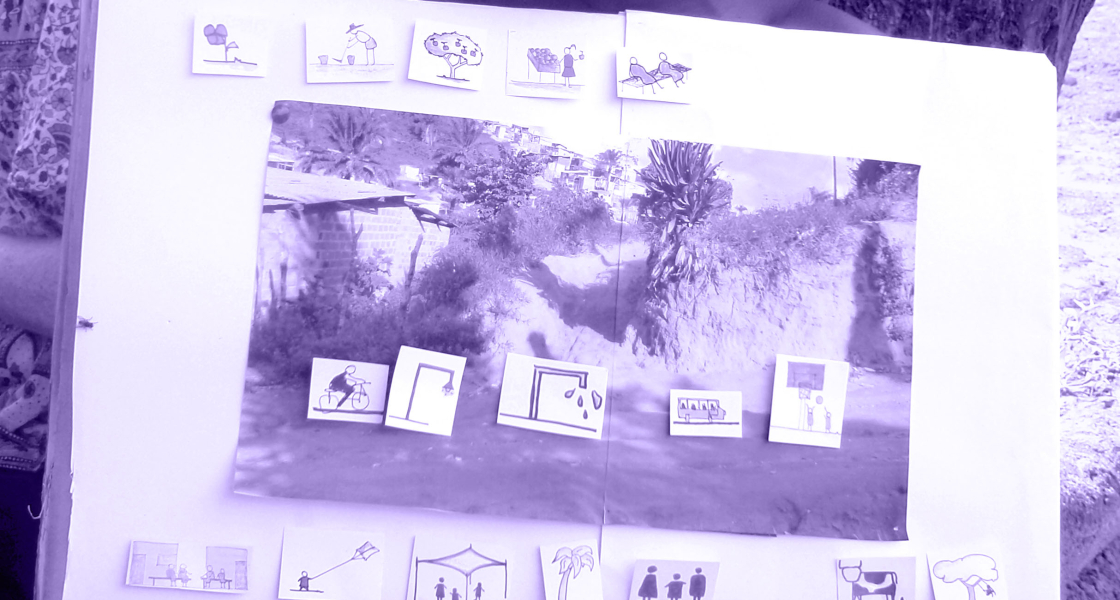A visual activity for prioritization. pdf download
Goal: To explore the aspirations of the residents and the importance they place on identified physical and social characteristics in the community.
Audience: Teenagers, women and men.
What you need:
– Photos or sketches of community spaces identified in previous exercises
– Card to draw symbols on
– Box to store symbols
– Tape
– A flat surface to work on
Description
This activity uses visual symbols to understand the importance that residents place on certain physical and social characteristics. Participants choose from a selection of symbols which reference aspirations i.e. improved access, space for games or sheltered areas (see above).
Those willing to be a part of the exercise are shown a photograph of an area that has been identified as a location to improve on, as reflected in the findings from previous exercises.
Participants should place symbols based on their own opinions and shouldn’t be influenced by facilitators or other residents. Other participants should wait to be asked the same question and should not be influenced by the answers that have come previous. Notes on the answers should be taken or facilitators should take photos of the participants and their answers, along with their age and gender.
Responses should be cross referenced with one another and findings from other exercises and general aspirations should be noted.
Instructions:
Step 1: Number each photograph. Prepare a board with each picture and corresponding set of symbols. Symbols should include physical elements but also social activities. The activity takes place on an individual basis, record the name, gender and age of each person before starting.
Step 2: Ask them to choose one of the photos/sketches to use as a canvas. From the different symbols provided, only a maximum of 5 elements can be used, meaning participants will have to prioritize which ones are most important to them and that they consider crucial to transform the area. Question their decision and note down their reasons for it.
Step 3: If possible take a photo of the participant holding the photo/sketch with their selection.




